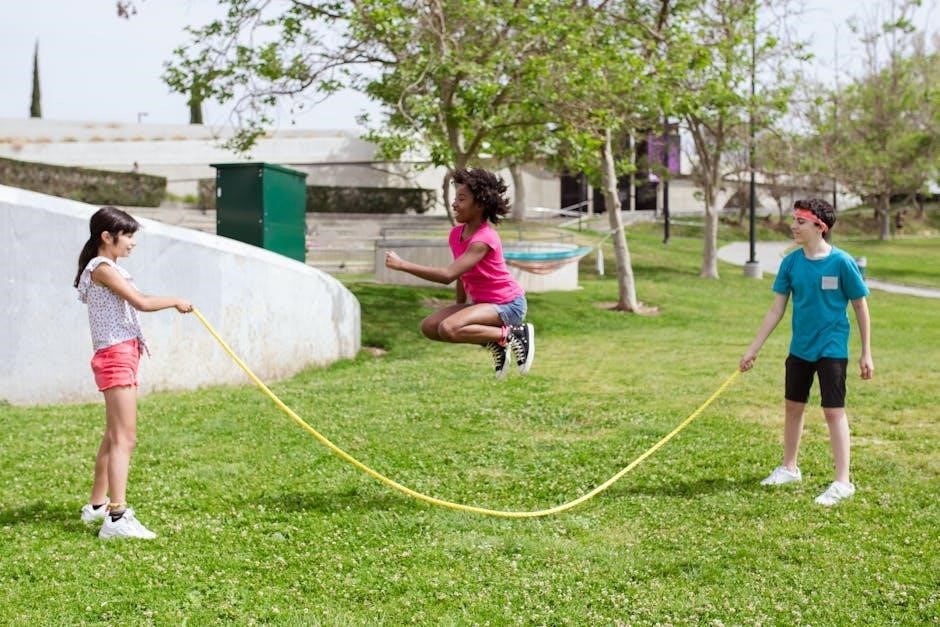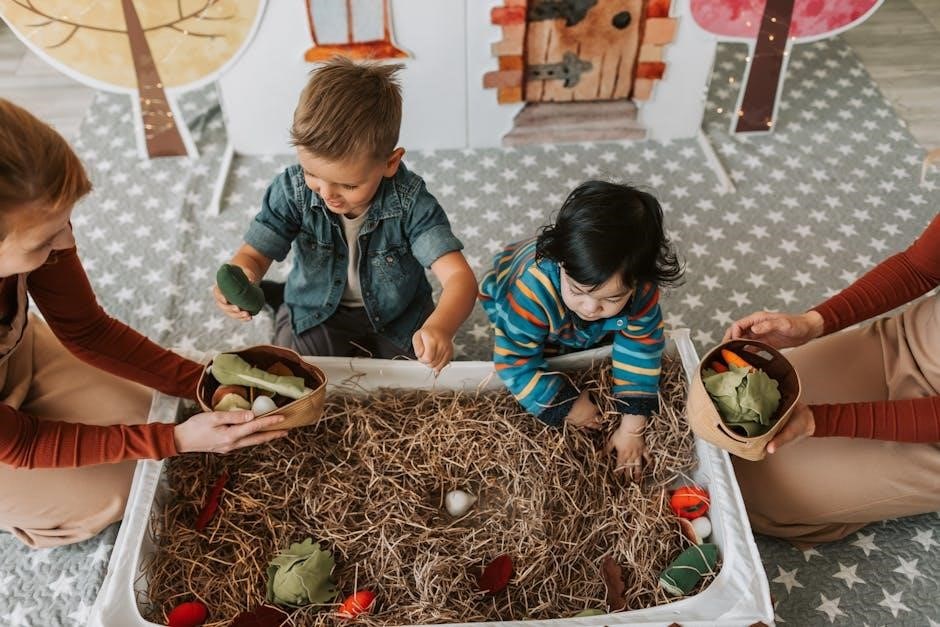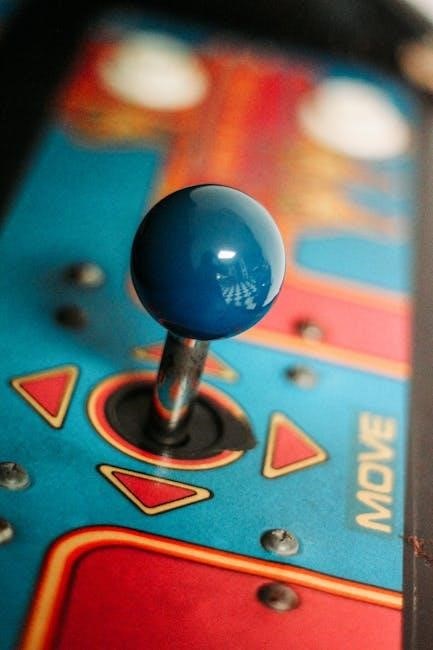Crate Games, developed by Susan Garrett, are a fun, reward-based training method. They focus on self-control, reducing anxiety, and building a positive crate association, suitable for puppies, rescue, and adult dogs. The program includes an online course and a downloadable PDF guide, accessible worldwide.
What Are Crate Games?
Crate Games, developed by Susan Garrett, are a structured, positive dog training method. They involve using a crate as a tool to teach self-control, calmness, and problem-solving skills. The games are designed to make the crate a rewarding and safe space for dogs, encouraging them to enter and stay voluntarily. Through treats, rewards, and clear criteria, dogs learn to associate the crate with positive outcomes, helping to reduce anxiety and frustration. This method is adaptable for puppies, rescue dogs, and adult dogs, promoting mental and emotional well-being while strengthening the human-dog bond.
Who Is Susan Garrett?
Susan Garrett is a renowned dog trainer, behaviorist, and founder of Crate Games. Known for her positive, reward-based methods, she has transformed dog training globally. Author of Ruff Love and Shaping Success, Susan’s approach emphasizes self-control, calmness, and mental stimulation. Her Crate Games program is widely acclaimed, helping dogs of all ages and backgrounds. With a focus on building trust and confidence, Susan’s techniques are embraced by professionals and pet owners worldwide, making her a leading figure in modern dog training.
The Purpose of Crate Games
Crate Games are designed to make the crate a positive, rewarding space for dogs, fostering self-control and calmness. The primary goals include teaching dogs to view the crate as a safe haven, remain quiet while inside, and wait patiently until released. By focusing on reward-based learning, Crate Games help reduce anxiety and stress, while also providing dogs with a sense of control and confidence. This method creates a strong foundation for impulse control and emotional stability, benefiting dogs of all ages and backgrounds.

The Structure of Crate Games
Stage 1 begins by introducing the crate calmly, rewarding the dog for entering, and ensuring they stay inside without breaking the door’s plane, fostering independence and focus.
Step-by-Step Training Process
The training begins with introducing the crate calmly, rewarding the dog for entering and staying inside. Next, you establish criteria, such as not breaking the crate door’s plane, using treats and consequences. Gradually, distractions are added to test the dog’s focus, and advanced stages involve multiple dogs, reinforcing self-control and impulse management. This structured approach ensures the dog learns independence, respect for boundaries, and associates the crate with positive experiences, building a strong foundation for further training and real-world applications.
Stage 1: Getting Started
Stage 1 focuses on creating a positive association with the crate. Start by introducing the crate in a calm environment, ensuring your dog feels comfortable. Reward your dog for entering the crate voluntarily, using treats and praise. Only open the crate door when your dog is calm, teaching them to associate the crate with relaxation. This initial phase lays the foundation for more advanced training by establishing trust and a positive connection with the crate, making future steps smoother and more effective for your dog’s learning journey.
Criteria for Success in Crate Games
Success in Crate Games is measured by your dog’s ability to remain calm, focused, and self-controlled. Key criteria include your dog voluntarily entering the crate, staying quiet, and waiting patiently until released. The dog must also avoid breaking the crate door plane with any part of their body. Handlers should avoid using commands like “No” or “Aaah,” instead letting the crate’s environment and rewards guide the dog’s behavior. Consistency and patience are essential for achieving these milestones, ensuring a strong foundation for advanced training.

Benefits of Crate Games
Crate Games teach self-control, reduce anxiety, and create a positive crate association. They help dogs wait calmly, prevent door bolting, and provide a safe space for relaxation and focus.
Teaching Self-Control
Crate Games excel at fostering self-control in dogs by rewarding calm behavior. Dogs learn to associate waiting patiently with positive outcomes, reducing impulsiveness. The structured process encourages dogs to think critically about their actions, promoting emotional regulation. Susan Garrett’s method emphasizes allowing dogs to discover the value of self-control independently, creating a strong foundation for other training. This skill is invaluable in real-life situations, such as reducing bolting behavior and improving overall focus, making it a cornerstone of her training philosophy.
Reducing Anxiety and Stress
Crate Games are highly effective in reducing anxiety and stress in dogs by creating a safe, predictable environment. The structured, reward-based approach helps dogs associate the crate with relaxation and security. Susan Garrett’s method encourages calm behavior, minimizing nervousness and fear. Dogs learn to self-soothe, which is especially beneficial for those prone to separation anxiety or environmental stress. By reinforcing a positive emotional state, Crate Games provide a practical solution for pet owners seeking to help their dogs feel more secure and composed in various situations.
Building a Positive Association with the Crate
Crate Games help dogs develop a positive association with their crate by turning it into a rewarding and enjoyable space. By using treats, praise, and playful interactions, dogs learn to view the crate as a desirable place. The process involves encouraging voluntary entry and rewarding calm behavior, which fosters trust and confidence. Over time, the crate becomes a source of comfort and security, reducing anxiety and stress. This approach ensures dogs see the crate as a positive retreat, rather than a confinement, enhancing their emotional well-being and training success.

Advanced Crate Games Techniques
Advanced techniques involve multiple dogs, impulse control exercises, and integrating games with agility or obedience training. These methods enhance focus, self-control, and teamwork, making training dynamic and engaging.
Multiple Dogs in the Household
Managing multiple dogs in the household using Crate Games can be highly effective. Each dog learns to associate the crate with positive reinforcement, reducing competition and stress. By focusing on individual training, you ensure each dog understands crate etiquette. Advanced techniques involve simultaneous training sessions, where dogs learn to remain calm while others play, fostering a peaceful environment. This approach strengthens self-control and reinforces desired behaviors, making multi-dog households more manageable and harmonious.
Using Crate Games for Impulse Control
Crate Games are an excellent tool for teaching impulse control in dogs. By reinforcing calm behavior and rewarding self-control, dogs learn to wait patiently in their crate. This training helps reduce unwanted behaviors like door bolting or jumping up. The games encourage dogs to think critically, as they understand that remaining composed leads to rewards. Suitable for puppies, adult dogs, and rescue dogs, Crate Games build self-control, making real-life situations easier to manage, such as visitors arriving or food being prepared;
Integrating Crate Games with Other Training Methods
Crate Games seamlessly integrate with various training methods, enhancing overall dog training. They complement agility drills by teaching focus and impulse control, making start-line stays easier. In obedience, they improve calmness during distractions. Combined with recall training, Crate Games strengthen self-control, ensuring dogs remain composed during exercises. This integration boosts foundational skills, making advanced training more effective. Whether for puppies, rescue, or adult dogs, combining Crate Games with other methods creates a well-rounded, confident learner, ready for diverse challenges and real-world situations.

Real-World Applications
Crate Games are practical for puppies, rescue dogs, and adult dogs, helping reduce anxiety, improve impulse control, and create a safe space. They enhance real-world training scenarios effectively.
Crate Games for Puppies
Crate Games are an excellent tool for puppies, helping them develop self-control and a positive association with their crate. By using treats and playful interactions, puppies learn to view their crate as a safe, comforting space. This method also aids in house training and reduces separation anxiety. Susan Garrett’s approach focuses on calmness and confidence, ensuring puppies grow into well-adjusted adult dogs. The games are simple, effective, and tailored to a puppy’s natural curiosity, making crate training a enjoyable experience for both the puppy and owner. This foundation builds lifelong positive crate behavior.
Crate Games for Rescue Dogs
Crate Games are particularly beneficial for rescue dogs, helping them overcome anxiety and build trust. By creating a safe, predictable environment, the crate becomes a sanctuary, reducing stress and fear. Susan Garrett’s method focuses on gentle, positive reinforcement, allowing rescue dogs to learn at their own pace. The games help rescue dogs develop self-control, clear boundaries, and confidence. This approach is especially effective for dogs with unknown histories or past traumas, providing them with a sense of security and stability. It’s a life-changing tool for their emotional and behavioral well-being.
Crate Games for Adult Dogs
Crate Games are highly effective for adult dogs, helping to build drive, focus, and impulse control. They provide mental stimulation and exercise, reducing boredom and destructive behaviors. Adult dogs benefit from the clear boundaries and structure Crate Games offer, which can address existing behavioral challenges. The positive reinforcement approach strengthens the bond between dog and handler, making training engaging and fun. Crate Games also help adult dogs generalize their learning, ensuring good behavior in various situations. This method is a powerful tool for refining skills and fostering emotional resilience in adult dogs of any breed or background.

Testimonials and Success Stories
Trainers and owners worldwide praise Crate Games for transforming dogs’ behavior. Many report reduced anxiety, improved focus, and stronger bonds. Success stories highlight its effectiveness for all ages and breeds.
Feedback from Dog Trainers
Professional trainers worldwide endorse Crate Games, citing its effectiveness in building self-control and reducing anxiety. Many highlight its versatility for puppies, rescues, and adult dogs, fostering calm behavior and strong bonds through positive reinforcement. Trainers appreciate the structured, layered approach, making it a cornerstone in their training programs. The method’s focus on reward-based learning aligns with modern training principles, ensuring a fun and engaging experience for both dogs and handlers.
Experiences of Dog Owners
Dog owners share positive experiences with Crate Games, noting improved calmness and reduced anxiety in their pets. Many highlight the method’s effectiveness in helping dogs view crates as safe, comfortable spaces. Owners appreciate the structured yet fun approach, which strengthens their bond with their dogs. The program’s accessibility through online resources and PDF guides makes it easy to implement, even for those new to training. Overall, Crate Games have proven to be a valuable tool for fostering confidence and self-control in dogs of all ages and backgrounds.
Case Studies and Results
Case studies reveal significant improvements in dogs’ behavior through Crate Games. Many owners report reduced anxiety and improved self-control in their pets. A 10-month-old GSD puppy showed decreased reactivity and increased confidence. Another dog overcame crate aversion, learning to view it as a safe space. Results consistently highlight faster learning curves and stronger owner-dog bonds. Susan Garrett’s structured approach ensures measurable progress, making Crate Games a trusted method for achieving lasting behavioral changes in dogs of all ages and backgrounds.

Comparison with Other Training Methods
Crate Games stand out as a positive, engaging approach compared to traditional crate training. They emphasize fun and rewards, making them more enjoyable and effective for dogs.
Traditional Crate Training vs. Crate Games
Traditional crate training often relies on confinement and routine, focusing solely on housebreaking or managing behavior. In contrast, Crate Games, developed by Susan Garrett, transform the crate into a positive space through interactive exercises. By using treats, play, and reward-based learning, Crate Games foster self-control and reduce anxiety, making the crate a welcoming environment. This approach stands out by engaging dogs mentally and emotionally, unlike traditional methods that may feel restrictive. The result is a more joyful and effective training experience.

Positive Reinforcement in Crate Games
Positive reinforcement is central to Crate Games, utilizing treats, play, and praise to encourage calm behavior, self-control, and a positive crate association. This method fosters trust and confidence, transforming the crate into a welcoming space. Unlike traditional training, Crate Games focus on reward-based learning, emphasizing desired behaviors without negative reinforcement. By making training enjoyable and engaging, it helps reduce anxiety and strengthens the bond between dog and handler. This approach is a cornerstone of Susan Garrett’s program, ensuring effective and joyful training outcomes.
Long-Term Effects of Crate Games
Crate Games foster long-term behavioral and emotional benefits, enhancing self-control, reducing anxiety, and creating a lifelong positive crate association. Dogs develop confidence and calmness, translating to improved behavior in various situations. The structured, reward-based approach strengthens the human-dog bond and provides a safe, comforting space. Over time, dogs become more resilient, adaptable, and eager to learn, making Crate Games a foundational tool for sustained, positive behavioral outcomes in puppies, rescue, and adult dogs alike.

Materials and Resources
The Crate Games program offers a comprehensive PDF guide, step-by-step online course, and additional downloadable resources. These materials provide detailed instructions, videos, and support for effective crate training.
The Crate Games PDF Guide
The Crate Games PDF Guide, created by Susan Garrett, is a cornerstone resource for dog trainers and owners. It provides step-by-step instructions, practical exercises, and expert tips to help dogs develop self-control and a positive association with their crate. The guide is suitable for puppies, rescue dogs, and adult dogs, offering customizable strategies to address individual needs. Available for immediate download, the PDF complements the online course and includes bonuses like additional training materials. This comprehensive resource ensures a fun and effective crate training experience, empowering dogs and their owners to succeed together.
Additional Resources and Downloads
Beyond the Crate Games PDF Guide, Susan Garrett offers bonus materials to enhance your training journey. These include video tutorials, checklists, and progress trackers. Additional downloads provide insights into advanced techniques and troubleshooting common challenges. The Crate Games Club also offers exclusive content. These resources are designed to support dog owners and trainers at every level, ensuring a comprehensive and engaging experience. They complement the core program, helping you achieve the best results for your dog.
Accessing the Online Course
Accessing Susan Garrett’s Crate Games online course is straightforward. Simply visit her official website and purchase the program. You can choose from options like a 30-day access pass or a full-year subscription. Once enrolled, you’ll receive immediate access to all course materials, including step-by-step videos and downloadable resources. The online platform is user-friendly, allowing you to progress at your own pace. This flexibility makes it ideal for dog owners and trainers looking to implement Crate Games effectively, regardless of their schedule or location.
Crate Games, developed by Susan Garrett, are a cornerstone in dog training, emphasizing self-control and positive crate association. They’re effective for puppies, rescue, and adult dogs, highly recommended by trainers, and accessible through an online course and PDF guide.
The Importance of Crate Games in Dog Training
Crate Games are a cornerstone in modern dog training, offering a fun, reward-based approach to teaching self-control and reducing anxiety. They create a positive association with the crate, making it a safe space for dogs. By focusing on calm behavior and impulse control, Crate Games provide a foundation for more advanced training. Their versatility makes them suitable for puppies, rescue dogs, and adult dogs, fostering trust and confidence. Trainers worldwide recommend Crate Games for their effectiveness in building a strong, positive relationship between dogs and their handlers.

Future of Crate Games and Dog Training
Crate Games, developed by Susan Garrett, are poised to remain a cornerstone of modern dog training. Their global adoption and online accessibility ensure continued growth. The method’s focus on positive reinforcement and adaptability to puppies, rescue, and adult dogs solidifies its future in canine education. As training evolves, Crate Games will likely integrate with new techniques, maintaining their relevance. Their emphasis on self-control and calm behavior aligns with ethical training trends, making them a timeless tool for building strong dog-handler relationships.

